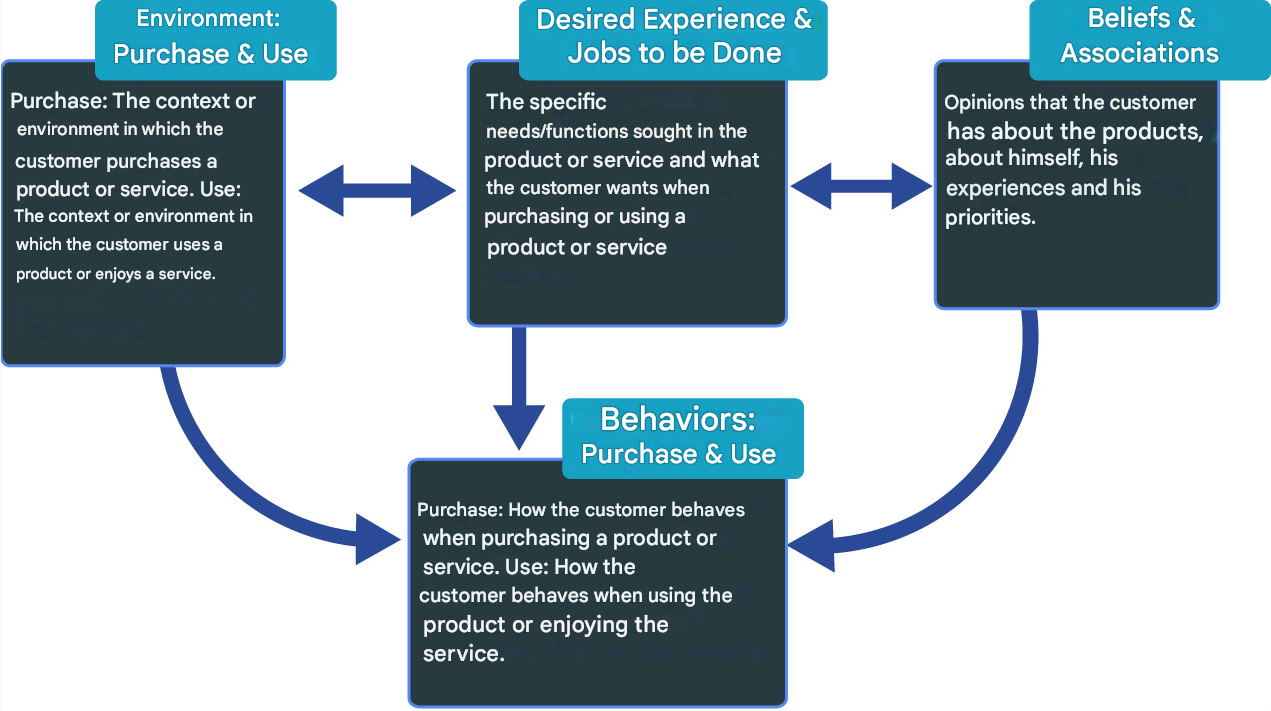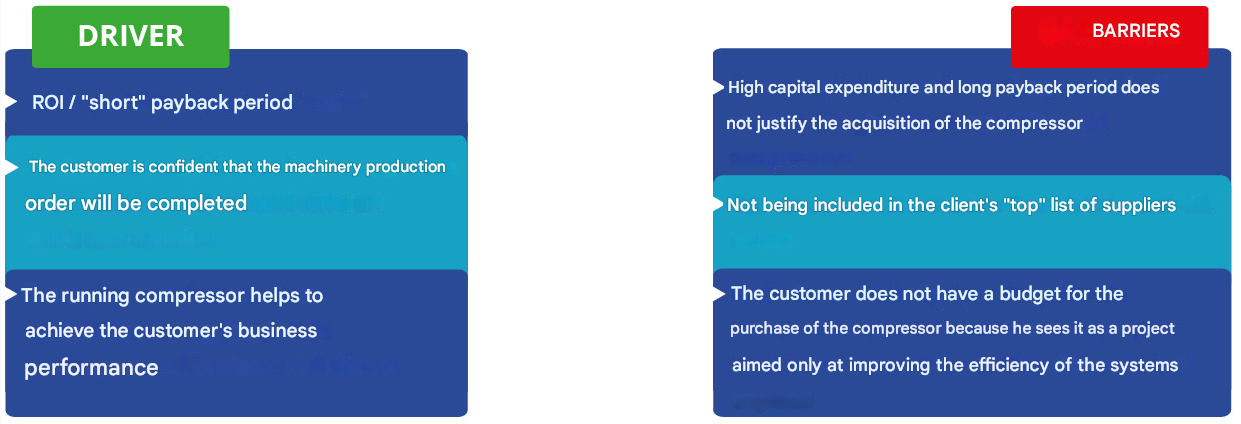The customer’s portrait: understanding problems to create value

You sell on emotion, but you justify a purchase with logic.
Joseph Sugarman
Imagine you’re at the airport, about to board the next plane for a well-deserved vacation.
Walking towards the boarding gate, we notice the billboards of the airlines that communicate the quality of flight we can expect on board their aircraft, the extreme punctuality of their flights or their very convenient loyalty programs (do you remember the “MilleMiglia” program?).
For some travelers this information is very important and can also guide the choice of traveling with one airline instead of another, but – and I think we’ve all experienced it at least once in our life – our relationship with an airline does not start on board a plane or in the waiting lounges that we have earned thanks to our loyalty points, but it extends throughout the planning and execution of the trip.
Our concerns (and the resulting purchase decisions), therefore, can also be focused on how easy or difficult it is to buy a ticket on the airline’s website, whether we can bring our carry-on with us in the cabin or if we must leave it in the hold, what can happen if our flight is delayed or canceled, and so on.
If we change our travelling hat and try to be the manager of one of the airlines responsible for business growth, focus only on the positive attributes that we can offer customers (quality, punctuality, loyalty programs) and underestimating or ignoring the “problems” that current and future customers experience throughout the purchasing process can lead to developing business growth plans not properly solid.
The client’s portrait
To avoid this danger and try to know the best, and in depth, customers one of the most used tools – probably the most common in the world of marketing – is the use of Buyer Persona (also called customer persona, audience persona, or marketing persona): real best practice of any company that declares itself “customer oriented”, which promises to provide useful information – the so-called insights – to better clarify the benefits of products and/ or services in the minds of customers (and then activate marketing/commercial actions to increase business) through a major data analysis work, related to product preferences, personal values, lifestyles and demographic information of customers.

Regardless of the tool used, care must be taken not to describe the customer’s life solely in relation to the company’s product/service so as not to make the picture too product-centric and not to focus too much on the benefits that customers experience when they buy or try our product/service, but also consider all the difficulties that the customer encounters in finding, knowing, buying and using the product.
In addition, to understand our current clients and non-clients with the objective of developing and executing business growth projects and initiatives, we must consider a key element often overlooked: understand which are the key behaviors we want our customers to act within the purchasing process – those that if activated allow us to grow our business – focusing on what are the “drivers”, that is the elements that encourage these behaviors to take place, and especially what are the “barriers”, that is the problems our clients face in performing these behaviors and, with our growth initiatives, mitigate or eliminate them.
The main point that acts as a pivot in setting up this new approach is to focus on our customers: research and analyze analytical and qualitative data to understand why customers behave in a certain way within the purchase process to be able to structure and outline the customer portrait.
The logic behind compiling this tool is linear: the desired experience and task that the customer aims to achieve through the product is influenced by the context (environment) in which the customer lives, purchases and uses the product, from the opinions that the customer has of itself and the associations that it links to the product and together, these three elements determine our customer’s purchasing behavior within the process and, consequently, the use of the product itself.
Through this line of thought, the different drivers and barriers to key customer behaviors that we want to activate are very quickly revealed and allow you to design and execute the most suitable actions to encourage the desired behaviors or “facilitate”, removing any barriers identified.
These two elements (drivers of behavior and barriers) are comparable to the requirements that a growth plan must have because they can accelerate the growth of business turnover from that customer. In fact, if drivers and barriers are affected by specific actions identified in the plan, they can increase the propensity of customers to drive the purchasing or usage behaviors desired by the company.
Let’s take as an example a company that produces industrial compressors: going deep into the understanding of their customers – i.e. companies from different industrial sectors (pharmaceutical, food and beverage, chemical industry,…) – the development of the customer portrait has led us to identify the following drivers and barriers to key customer behavior on which we wanted to act, “being consulted and/or selected as main supplier”:
They are shown in the table below, generalized for obvious reasons of confidentiality.

Having identified this short list of elements that can be operated by the company, the subsequent go-to-market plan was elaborated, elaborating a value proposal related to a new offer of a dedicated service package, and several commercial actions which have made the plan operational and actionable.
Incentives, problems and solutions
Understanding why our current and future customers behave in a certain way in the market and identifying the incentives and problems – drivers and barriers – that underlie those behaviors is surely a different approach to planning and developing projects to grow the company, and allows for a greater focus on what and how- for example new products and/or services and related business actions – companies can indeed be market winners and, therefore, grow sustainably.
The customer’s portrait, its components and the logic of thought with which we arrive at its complete development provides an overview and acts as a connection between the strategic choices of growth of a company and the ways in which these choices are made real and tangible.
Articolo a cura di:

Riccardo Siciliani
former Manager Lenovys
He is a Manager in the Delivery Unit Strategy & Innovation at Lenovys, and manages projects related to the definition and implementation of corporate strategies, the innovation systems and application of Lean Product and Process Development principles with clients operating in the manufacturing, food & beverage and financial services sectors.
Read more
Prossimi eventi










